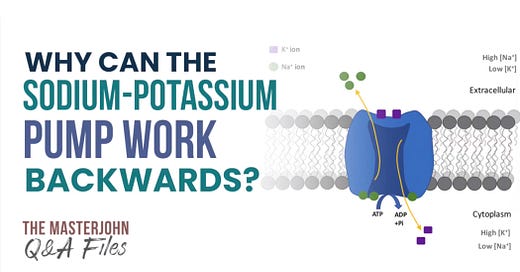Introduction
Short answer: The second law of thermodynamics means that concentrations of specific chemicals or positive or negative charges will always "want" to disperse and randomly mix in their environment, making concentrations of ions such as sodium or potassium a form of potential energy. While the pump normally uses energy from ATP to invest into creating those concentrations, if ATP levels are low and sodium and potassium are already highly concentrated on opposite sides of the cell membrane, their potential energy can be released by mixing across the membrane, and can be used to synthesize ATP.
This episode was cut from the original Q&A session that you can find here.
DISCLAIMER: I have a PhD in Nutritional Sciences and my expertise is in performing and evaluating nutritional research. I am not a medical doctor and nothing herein is medical advice.
Listen to the Audio
I highly recommend watching the video above but you can also listen to the audio here:
Read the Transcript or Leave a Comment
Masterpass members have access to the transcript below.
Masterpass members can also read and leave comments below. Non-members can read and leave comments on the general podcast page.
Learn more about the Masterpass here.




